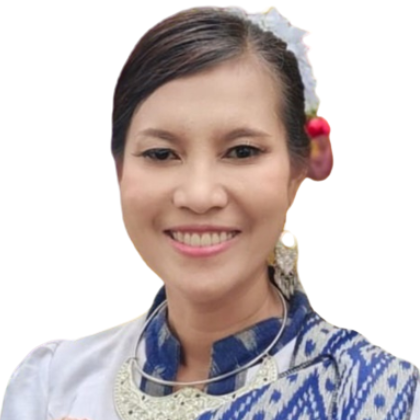Analisis Perbedaan Faktor Enabling Praktik Buang Air Besar Desa ODF Dan Desa Belum ODF Di Kota Surabaya
Downloads
Latar Belakang: Upaya peningkatan derajat kesehatan pada sektor lingkungan salah satunya dengan pengadaan sarana lingkungan fisik yang sehat seperti jamban keluarga. Berdasarkan data Laporan Kemajuan Akses Sanitasi Kumulatif Nasional Tahun 2019, penduduk Jawa Timur yang masih menumpang ke jamban sehat sebanyak 879.969 Kepala Keluarga dan yang berperilaku Open Deficiation (OD) sebanyak 969.663 KK.
Tujuan: Menganalisis perbedaan faktor enabling terhadap praktik buang air besar antara desa belum ODF dengan desa ODF.
Metode: Jenis penelitian observasional analitik kuantitatif dan kualitatif dengan desain penelitian Cross Sectional. Dianalisis secara univariate menggunakan uji One Sample Kolmogorov-Smirnov test dan bivariat menggunakan uji Mann-Whitney U test”. Dari uji ini diperoleh kemungkinan hasil uji yaitu signifikan atau bermakna α = 0,05 maka terdapat perbedaan yang bermakna antara variable yang diuji. Hipotesa diterima apabila p value ≤ 0,05.
Hasil: Uji statistik Mann Whitney U test menyatakan adanya perbedaan pada praktik buang air besar antara desa belum ODF (Kelurahan Jagir) dan desa ODF (Kelurahan Ketintang) dimana pada kepemilikan lahan pada Kelurahan Jagir masyarakat tidak memiliki lahan sendiri dan lahan yang ditempati merupakan milik PT. KAI yang berpengaruh pada ketersediaan jamban sehat, sekalipun memiliki jamban tetapi tidak dilengkapi dengan septic tank, sedangkan pada Kelurahan Ketintang rata-rata masyarakat memiliki lahan sendiri, sehingga mempermudah masyarakat memiliki jamban yang dilengkapi dengan septic tank. Hal ini dikarenakan nilai p-value = 0,000 < dari α (0,05), dimana jika p-value < α, maka H0 ditolak dan Ha diterima.
Kesimpulan: Lahan yang ditempati masyarakat Jagir bukan milik sendiri sehingga mempersulit warga untuk membangun jamban sehat, serta jamban yang ada tidak memenuhi persyaratan jamban sehat, sedangkan masyarakat Ketintang yang rata-rata tinggal di dekat sungai tetapi telah menerapkan praktik buang air besar yang benar dengan menggunakan jamban sehat.
Abstract
Background: One of the efforts to improve health status in the environmental sector is the provision of a healthy physical environment such as family toilet. Based on data from the 2019 National Cumulative Access to Sanitation Progress Report, the population of East Java who still uses healthy latrines is 879,969 households and those who have Open Deficiation (OD) behavior are 969,663 families.
Objective: Intervention of possible factors needs to be done because these factors are supporting/enabling factors, where if we do a certain intervention it will be difficult if the facilities and infrastructure are not available/ not supported.
Methods: This type of research is observational analytic quantitative and qualitative whith a cross sectional research design. The data analysis technique was univariate using the One Sample Kolmogorov-Smirnov test and bivariate analysis using the Mann-Whitney U test. From this test, it is obtained that the test results are signicant or significant α = 0.05, so there is a significant difference between the tested variables. The hypothesis is accepted if the p value is ≤ 0.05.
Results: The statistical test of the Mann Whitney U test states that there is a differences in the practice of defecating between Kelurahan Jagir and Kelurahan Ketintang where in land ownership in Kelurahan Jagir, the community does not own their own land and the land occupied is owned by PT.KAI has an effect on the availability of healthy latrines, even though it has a latrine but is not equipped with a septic tank, while in Ketintang Village the average person has their own land, making it easier for the community to have a toilet equipped with a septic tank.
Conclusion: The land occupied by the Jagir community is not their own, making it difficult for residents to build healthy latrines, and the existing latrines do not meet the requirements for healthy latrines, while the Ketintang community who mostly live near the river but have implemented the correct practice of defecating using healthy latrines.
Abdullah (2010) ‘Tujuh Syarat Membangun Jamban Sehat', 2010. Available at: https://www.sanitasi.or.id/index.php?option=com.
Andini, S. A. (2017) ‘Analisis Faktor Yang Berhubungan Dengan
Perilaku Orangtua Tentang Open Defecation Pada Anak Usia Sekolah Berdasarkan Teori Transkultural Nursing'. Available at: http://repository.unair.ac.id/id/eprint/69593.
Anggoro, R. R. (2017) ‘Gambaran Perilaku Buang Air Besar Sembarangan Pada Masyarakat Desa Jatimulyo, Kabupaten Bojonegoro', Universitas Nusantara PGRI Kediri, 01(2), pp. 1–7. Available at: http://www.albayan.ae.
Arlin, Sudirman and Nurafni (2019) ‘Faktor Yang Berhubungan dengan Kepemilikan Jamban di Desa Ta'aniuge Kecamatan Tomini Kabupaten Parigi Moutong', Journal of Chemical Information and Modeling, 53(9), pp. 1689–1699.
Chandra, B. (2012) Pengantar Kesehatan Lingkungan. Penerbit B.
Hapsari, V. N. (2016) Faktor Yang Mempengaruhi Peran Serta Masyarakat Dalam Pelaksanaan Program Open Defecation Free (ODF) (Studi Kasus Di Kelurahan Karanganyar Kota Pasuruan). Airlangga.
Isral, F. (2017) ‘Faktor-Faktor Yang Berhubungan Dengan Kepemilikan Jamban Keluarga Di Jorong Ranah Kecamatan Pulau Punjung Kabupaten Dharmasraya Tahun 2017'.
KEMENKES (2019) ‘STBM (Sanitasi Total Berbasis Masyarakat). [Online] Available at: http://www.monev.stbm.kemkes.go.id/'. Available at: http://www.monev.stbm.kemkes.go.id/ [Accesed Selasa, 6 Oktober 2020].
Kurniawati, L. D. (2015) ‘BERPENGARUH, FAKTOR - FAKTOR YANG KELUARGA, TERHADAP PERILAKU KEPALA PEMUKIMAN, DALAM PEMANFAATAN JAMBAN DI LOROK, KAMPUNG NELAYAN TAMBAK SEMARANG'.
Laika, A. (2019) Hubungan Faktor Predisposisi, Faktor Penguat, Faktor Pendorong Dan Kepemilikan Jamban Terhadap Rendahnya Penggunaan Jamban Di RW. 01 Kelurahan Gunung Anyar Tambak Kota Surabaya. Airlangga.
Mardotillah, M. et al. (2019) ‘Peran Faktor Pemungkin Dan Penguat Pada Akses Jamban Sehat Perkotaan', Jurnal Antropologi: Isu-Isu Sosial Budaya, 20(2), p. 165. doi: 10.25077/jantro.v20.n2.p165-178.2018.
NATSIR, S. (2016) ‘Rencana Pengelolaan Sanitasi Lingkungan Di Sekitar Aliran Sungai Mangolo Kabupaten Kolaka'.
Notoatmodjo, S. (2010) Promosi Kesehatan Teori dan Aplikasi. Jakarta: Rineka Cipta.
Noviitry, F. and Agustin, R. (2017) ‘Determinan Kepemilikan Jamban Sehat Di Desa Sukomulyo Martapura Palembang', (2 (2)), pp. 107–116.
PERMENKES (2014) Peraturan Menteri Kesehatan No 3 Tahun 2014 Tentang Sanitasi Total Berbasis Masyarakat. Jakarta: Kemenkes RI.
Qudsiyah, W. A., Pujiati, R. S. and Ningrum, P. T. (2015) ‘Faktor-faktor yang berhubungan dengan Tingginya angka open defecation (OD) di kabupaten Jember (studi di desa Sumber Kalong kecamatan Kalisat)', e-Jurnal Pustaka Kesehatan, 3(2), pp. 362–369. Available at: https://jurnal.unej.ac.id/index.php/JPK/article/view/2679.
Samosir, K. and Ramadhan, F. S. (2019) ‘Peranan Perilaku dan Dukungan Tokoh Masyarakat terhadap Kepemilikan Jamban Sehat di Tanjungpinang', Jurnal Kesehatan, 0(1), pp. 77–86. Available at: http://journals.ums.ac.id/index.php/JK/article/view/7668/pdf.
Sukma, H. (2018) ‘Hubungan Pengetahuan, Sikap Bab, Dan Kepemilikan Septic Tank Dengan Status Odf (Open Defecation Free) Di Kecamatan Candisari Kota Semarang', Jurnal Kesehatan Masyarakat (e-Journal), 6(6), pp. 143–149.
Suwastika, D. G. and Dwipayani, N. M. U. (2010) ‘Faktor-Faktor yang Mempengaruhi Ketersediaan Septictank dan Pemanfaatan Sarana Sewerage System Pada Masyarakat Pinggiran Kali Di Kelurahan Dangin Puri Kecamatan Denpasar Timur', Kongres Nasional Ikatan Ahli Kesehatan Masyarakat Indonesia, (September).
Ulina, Y. I., Darmana, A. and Aini, N. (2019) ‘Faktor-faktor yang mempengaruhi masyarakat tidak memanfaatkan jamban di Desa Aek Kota Batu', 01(1), pp. 40–48.
Wirawan, P., Razak, A. and Dewata, I. (2017) ‘Relationship Education, Income, Knowledge and Public Attitudes With Utilization of Communal Mck', PROMOTIF: Jurnal Kesehatan Masyarakat, 7(2), p. 136. doi: 10.31934/promotif.v7i2.87.
Media Gizi Kesmas by Unair is licensed under a Creative Commons Attribution-ShareAlike 4.0 International License.
1. The journal allows the author(s) to hold the copyright and to retain the publishing right of the article without restrictions.
2. The legal formal aspect of journal publication accessibility refers to Creative Commons Attribution-Share-Alike (CC BY-SA).
3. The Creative Commons Attribution-Share-Alike (CC BY-SA) license allows re-distribution and re-use of a licensed work on the conditions that the creator is appropriately credited and that any derivative work is made available under "the same, similar or a compatible license”. Other than the conditions mentioned above, the editorial board is not responsible for copyright violations.



















